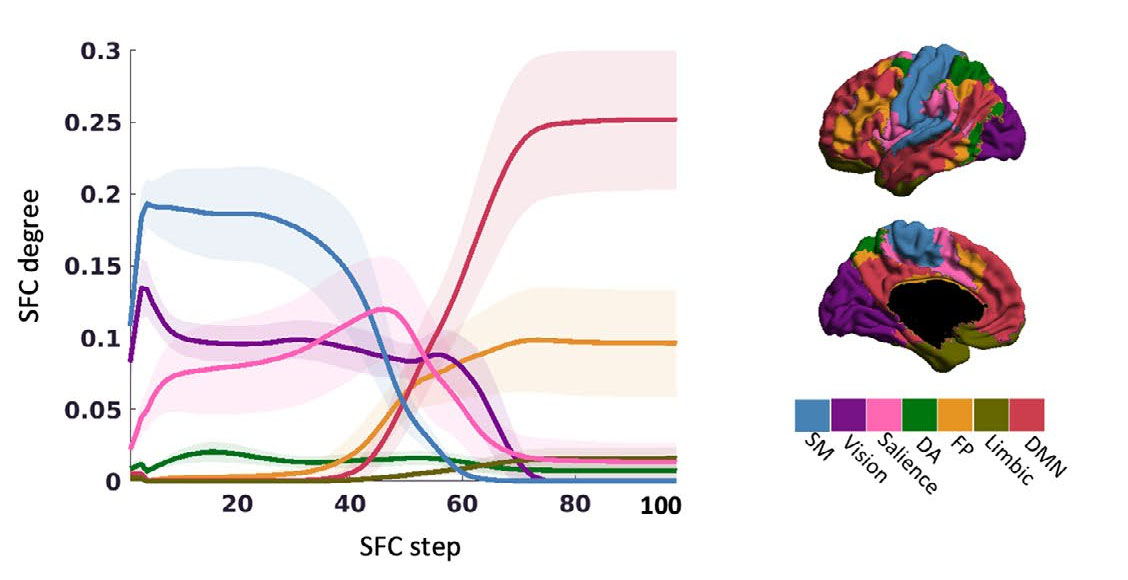Abstract
OBJECTIVE: Drug-resistant temporal lobe epilepsy (TLE) is typically associated with hippocampal pathology. However, widespread network alterations are increasingly recognized and suggested to perturb cognitive function in multiple domains. Here we tested (1) whether TLE shows atypical cortical hierarchical organization, differentiating sensory and higher order systems; and (2) whether atypical hierarchy predicts cognitive impairment.
METHODS: We studied 72 well-characterized drug-resistant TLE patients and 41 healthy controls, statistically matched for age and sex, using multimodal magnetic resonance imaging analysis and cognitive testing. To model cortical hierarchical organization in vivo, we used a bidirectional stepwise functional connectivity analysis tapping into the differentiation between sensory/unimodal and paralimbic/transmodal cortices. Linear models compared patients to controls. Finally, we assessed associations of functional anomalies to cortical atrophy and microstructural anomalies, as well as clinical and cognitive parameters.
RESULTS: Compared to controls, TLE presented with bidirectional disruptions of sensory–paralimbic functional organization. Stepwise connectivity remained segregated within paralimbic and salience networks at the top of the hierarchy, and sensorimotor and dorsal attention at the bottom. Whereas paralimbic segregation was associated with atypical cortical myeloarchitecture and hippocampal atrophy, dysconnectivity of sensorimotor cortices reflected diffuse cortical thinning. The degree of abnormal hierarchical organization in sensory-petal streams covaried, with broad cognitive impairments spanning sensorimotor, attention, fluency, and visuoconstructional ability and memory, and was more marked in patients with longer disease duration and Engel I outcome.
SIGNIFICANCE: Our findings show atypical functional integration between paralimbic/transmodal and sensory/unimodal systems in TLE. Differential associations with paralimbic microstructure and sensorimotor atrophy suggest that system-level imbalance likely reflects complementary structural processes, but ultimately accounts for a broad spectrum of cognitive impairments. Hierarchical contextualization of cognitive deficits promises to open new avenues for personalized counseling in TLE.

